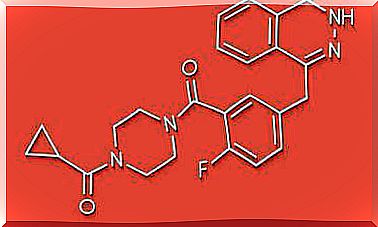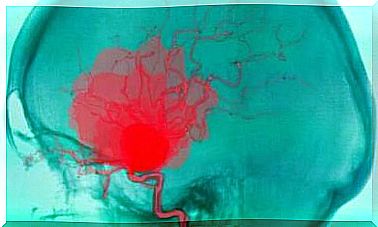Aortic Rupture: What It Is And What It Causes

Aortic rupture is a condition that requires rapid surgical treatment. The reason for this is that it is associated with high mortality. If you want to know more about the symptoms, causes and prevention of aortic rupture, keep reading.
Aortic rupture
You may not have heard this term before, but aortic ruptures are becoming more common. It is therefore vital to know exactly what it is about, what it causes and what its symptoms are, and to know some methods to prevent it.
The aortic rupture is, as the name implies, a rupture that occurs in the inner wall of the aorta. Blood can leak into the wall, causing the blood circulation to weaken or the aorta to break down.
Both possible consequences endanger the patient’s life. Especially if the aorta breaks down, the risk of death is quite high. For this reason, it is important to identify the symptoms of aortic rupture and see a doctor as soon as possible.

Symptoms of aortic rupture
Identification of symptoms is essential for prompt medical attention and early diagnosis. Below are some symptoms that you should pay special attention to:
- Severe, sharp or wheezing pain in the chest or behind the sternum.
- Pale skin and weak pulse.
- Shortness of breath.
- Dizziness with nausea and sweating.
These symptoms can make the patient believe he or she has a heart attack. Because of these symptoms, it is very important to go to the emergency room immediately. Severe pain in the chest or behind the sternum can indicate a rupture of the aorta, so act as quickly as possible.
Causes
The causes of aortic rupture can vary. Below are some possible causes:
- Aortic wall embrittlement: In this case, the artery wall weakens. It can be caused by atherosclerosis, for example. The aortic wall thins and expands, which increases the risk of rupture.
- Arteritis: This is an inflammation that causes the arteries to narrow, which prevents proper blood flow.
- Valve Diseases: In this case, the flaps are damaged as a result of aging, injury, or infections, causing them to weaken and increase the risk of rupture.

These were some of the possible causes of aortic rupture. Is there any way to prevent aortic rupture then?
Yes you can, and that’s why it’s important to know how to reduce its risk.
How to prevent aortic rupture?
There is only one possible treatment for an aortic rupture, and that is surgery. The best way to avoid this is to try to prevent aortic rupture.
If you have arteritis, heart valve disease, or a similar problem, it is best to have regular medical check-ups. In addition, it is important to control blood pressure.
If you develop a disease that weakens the arteries or exposes the aorta to rupture, ask your doctor what you should do to prevent these potentially fatal consequences. Your doctor will give you useful options.
It is good for everyone to be aware of the symptoms and risks of aortic rupture, as it can be fatal. It is also important to remember regular medical check-ups. If you and your doctor think you may be at risk for an aortic rupture, you need to be especially careful about preventing it.
If you have any of the above conditions, your chest hurts or you have shortness of breath, go to the emergency room as soon as possible. Prompt treatment is essential for survival in these situations.









